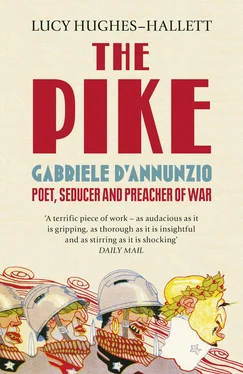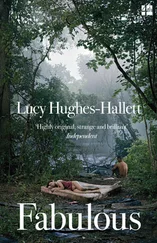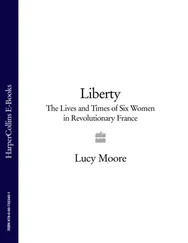
BEAUTY
WHEN D’ANNUNZIO FIRST WENT to Count Primoli’s house he might have had something to say about the host, a pioneering photographer and a flamboyant dandy who took pictures of himself dressed in velvet knickerbockers. Primoli was to become another of d’Annunzio’s mentors, and played the part of go-between in two of his later love affairs. But in his account of one of his first evenings at the count’s, d’Annunzio ignores the human and lingers over the inanimate.
A large room painted Chinese red, a mass of flowers, glass lampshades shaped like birds or lilies, every surface cluttered with things. D’Annunzio made notes. ‘A dazzling shimmer: a gold-embroidered sash encircles a Hispano-Moresque platter, a length of Venetian velvet is secured by a samurai sword: a sixteenth-century globe and a mauve cope are the backdrop to a profane picture by an ultra-modern artist.’ This rich jumble, in which the very old and very new, the beautiful and the bizarre, are juxtaposed, was a model for the interiors d’Annunzio later created in his own homes, spaces which were both settings for the drama of their creator’s life and works of installation art.

D’Annunzio wrote about his contemporaries’ ‘bric-à-bracomania’. ‘Every drawing room in Rome … was laden down with “curiosities”, every lady covered her cushions with a bishop’s cope or arranged her roses in an Umbrian pharmacist’s jar or a Chalcedon goblet.’ It was a craze he entered into with enthusiasm. He rummaged through the stalls in the Campo dei Fiori, looking for coins and prints and figurines. He frequented auction houses. In Pleasure, Sperelli and Elena Muti attend the sale of a dead cardinal’s effects. Tiny, exquisite objects are passed round for prospective buyers’ inspection – Roman cameos, illuminated missals, jewels made by the goldsmiths of the Borgia court. When Elena touches something particularly fine, her ‘ducal’ fingers quiver a little, a frisson which pleases Sperelli both as boding well for her capacity for sexual ecstasy, and as evidence of the fineness of her aristocratic taste.
A shop that d’Annunzio particularly enjoyed was that run by the Beretta sisters, selling all things Japanese. He loved its clutter – ‘lacquers, bronzes, textiles, earthenware, all the rare and precious things are scattered about in a wonderful confusion of colours and shapes’. Japanese artefacts had been gradually reaching the West since the 1850s and by the time d’Annunzio arrived in Rome they were quite the fashion. Identifying a vogue, be it for a new style of hair ornament, an innovative narrative technique or a political theory, was already one of his talents. He was devouring the writings of his French contemporaries, alive to the Parisian dernier cri as well as to what was being worn, read and thought in the Italian capital. He reviewed Judith Gautier’s translations of Japanese poetry; he praised the Goncourt brothers for the way they promoted oriental art. The Berettas’ shop, with its crimson walls and glossy black woodwork, its air scented with cedar and sandalwood, was another of the places which would shape his own style.

Rare and precious things, unfortunately, are expensive, and in the early 1880s, d’Annunzio, for all the volume of his work, was not earning nearly as much as he thought he needed. Meanwhile his responsibilities were growing. He and Maria passed the first fifteen months of their married life in Pescara, Francesco Paolo having allowed them the Villa Fuoco. There, in January 1884, their son Mario was born. D’Annunzio was not to prove a dependable father, but the birth moved him. ‘I went round and round the room like a beast in a cage … I could hear a feeble, sweet mewling … I don’t know how to tell you what I felt.’ He wrote dotingly about the little pink creature with blue eyes and a tiny, tiny mouth, and made plans for him. Mario would be a painter, or perhaps a scientist. His second novel, The Innocent, contains lovingly detailed descriptions of a baby’s tiny hands and wet gums, its wildly waving arms and unfocused eyes. The novel ends though, with the fictional father killing the infant, which is impeding its parents’ love life. Less than a month after Mario was born d’Annunzio reported that he had sent his baby to stay with its grandparents. ‘It yelled too much.’
In the Abruzzi he completed another collection of stories, heavily influenced by Flaubert, describing the sexual cravings of upper-class women. The volume was published that summer of 1884 by Sommaruga, with a jacket design featuring three nude women. D’Annunzio protested that the image was ‘indecent’. Author and publisher exchanged heated letters in the columns of the journals, but it has been plausibly suggested that this apparent falling out was contrived between them in order to publicise the book.
D’Annunzio was also sending articles back to the Roman journals, but he was running out of material. A piece on the brass bands which processed around Pescara on public holidays was a particularly desperate bit of barrel-scraping; privately d’Annunzio admitted to detesting the bands’ raucous music. He was missing his friends. ‘No one comes to see me,’ he wrote to Scarfoglio. He felt out of touch. He begged to be sent the latest journals. ‘Nothing reaches me here and I’m desperate.’ In November 1884, still only twenty-one years old, he returned to Rome, taking his wife and baby with him, to take up a job as an editor and regular contributor to La Tribuna.
Over the next four years, day after day, he was to write literally hundreds of pieces, vignettes of Roman social and cultural life. Sometimes he played the erudite critic: he reviewed books and exhibitions. In discussing Renan’s Life of Jesus he launched into a discursive piece on Homer’s Elysian fields. More often he was an observer of the frivolous ‘high life’. He wrote about funerals and race meetings, about concerts and parties. He gave a lasciviously detailed account of a meal eaten after a day’s hunting: hare with rosemary and thyme; goose-liver pâté with a glaze scented with truffles; champagne. He prescribed the most graceful way to take snuff. He laid down rules about what it was appropriate for a gentleman to wear to the opera.
He had a multiplicity of names. He wrote as Sir Charles Vere de Vere; as Lila Biscuit; as Happemouche; as Bull-Calf; as Puck or Bottom (in 1887 he announced that he was about to publish a translation of A Midsummer Night’s Dream – it never appeared); as Miching-Mallecho (another Shakespearean reference); as the Japanese Shiun Sui Katsu Kava and – most frequently – as Duke Minimo. These fake personae were not just names, but fully developed characters, each with their own servants, houses and social lives. He invented peccadilloes for them and spoke through their differentiated voices. Sir Charles Vere de Vere describes his friend Donna Claribel, and then quotes at length from the diary she keeps in a notebook bound with wild ass’s skin (d’Annunzio had discovered Balzac). Doubly distanced from its actual author, Donna Claribel’s account of a meet of the foxhounds is an airy piece of fiction, light and funny. D’Annunzio’s major works give no hint that he had any sense of humour whatsoever, but these early pieces are playful and droll. The hack-writer was not only observing settings and characters and situations which would be recreated by the novelist. He was also trying out fictional techniques.
Читать дальше














